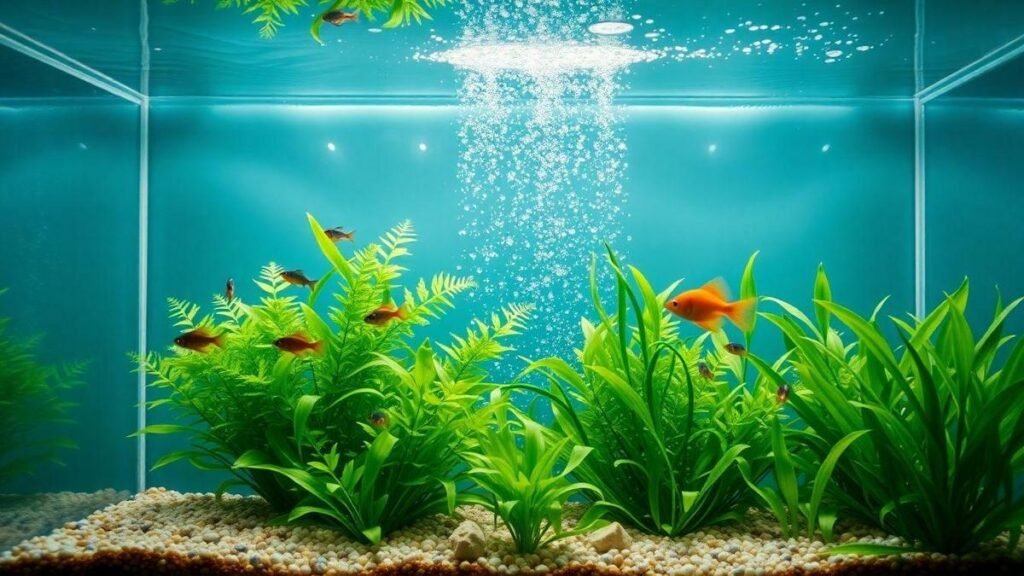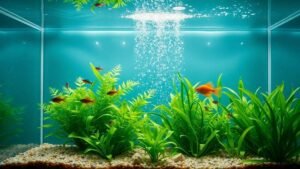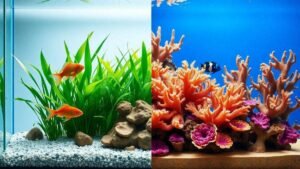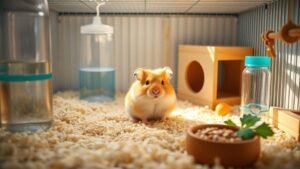A importância da limpeza de aquários para a saúde dos peixes — My Routine for Clean Tanks and Healthy Fish
I care deeply about clean tanks and healthy fish. The phrase A importância da limpeza de aquários para a saúde dos peixes guides every step of my routine: weekly tests, gentle filter care, regular water changes, and strict quarantine practices. These small, steady actions keep stress low and longevity high.
Key takeaways
- Keep water clean to protect fish health.
- Test ammonia, nitrite, and nitrate weekly.
- Do partial water changes (10–30%) on a schedule.
- Maintain and clean filters without killing beneficial bacteria.
- Quarantine new fish and sterilize tools to prevent disease.
Why I follow “A importância da limpeza de aquários para a saúde dos peixes”
Clean water equals calmer fish, brighter color, steady appetite, and fewer diseases. I treat each check like a quick doctor’s visit: read, log, and act if needed — a mindset that fits into broader pet care practices like those discussed in assessing overall pet care.
Monitor: ammonia, nitrite, nitrate
I treat ammonia and nitrite as urgent (target: 0 ppm) and keep nitrate low (< 20–40 ppm depending on tank). I test these weekly and act on spikes.
| Parameter | Safe range | Why it matters | Action if high |
|---|---|---|---|
| Ammonia | 0 ppm | Toxic, immediate harm | Do an immediate partial water change, check filter |
| Nitrite | 0 ppm | Interferes with oxygen transport | Partial water change, treat as directed |
| Nitrate | < 20–40 ppm | Chronic stress | Weekly water changes, reduce feeding |
Note: safe ranges and management differ between systems — see guidance on the differences between freshwater and saltwater pet fish if you keep non‑standard setups. I repeat: A importância da limpeza de aquários para a saúde dos peixes means testing, logging, and responding.
Tests and logging
- Use liquid test kits for accuracy; strips for quick checks.
- Test weekly and keep a simple log: date, ammonia, nitrite, nitrate, action.
- If trends repeat, change cleaning frequency, stocking, or feeding.
Example log (short):
| Date | NH3 | NO2 | NO3 | Action |
|---|---|---|---|---|
| 2025-09-11 | 0.25 | 0 | 25 | 30% water change, check filter |
| 2025-09-18 | 0 | 0 | 18 | No change |
Filter care: protect beneficial bacteria
I keep filters running and clean media carefully to preserve biological filtration — the same principles covered under general freshwater fish care and tank tips.
| Media | How I clean | Frequency | Purpose |
|---|---|---|---|
| Mechanical (sponges) | Rinse in removed tank water | Every 2–4 weeks | Remove debris, keep flow |
| Chemical (carbon) | Replace (don’t rinse in tap) | Every 3–4 weeks | Remove odors/chemicals |
| Biological (ceramic) | Rinse lightly in tank water | Rarely replace | Maintain nitrifying bacteria |
Safe steps: unplug filter before opening, rinse parts in removed tank water, stagger full media changes, avoid soaps/bleach. Remember A importância da limpeza de aquários para a saúde dos peixes — proper filter care prevents ammonia spikes.
Water changes: schedule and method
Regular water changes remove toxins and lower nitrates.
- Typical removal: 10–30% per change.
- Frequency: weekly is common; adjust by stock and test results.
| Change % | Frequency | Use when |
|---|---|---|
| 10% | Weekly | Lightly stocked tanks |
| 20% | Weekly | Most home tanks |
| 30% | Weekly/after meds | Heavily stocked or post-treatment |
Always treat tap water with a dechlorinator and match temperature within a degree or two before adding. These steps honor A importância da limpeza de aquários para a saúde dos peixes by avoiding shocks and chemical exposure.
Quick water-change checklist:
- Test water.
- Prepare treated, temperature-matched water.
- Siphon gravel and remove 10–30%.
- Refill, restart equipment, observe fish for 5 minutes.
Algae and light control
Control light and nutrients to limit algae growth.
- Use a timer: 6–8 hours/day for low-tech; 8–10 for brighter setups with close monitoring.
- Test nitrate and phosphate weekly; feed sparingly.
- Use manual removal (scrapers, soft brushes) and consider algae eaters (e.g., Otocinclus, Amano shrimp, nerite snails) as helpers, not fixes — species and compatibility are covered under general freshwater tank care.
Targets:
- Low-tech planted: light 6–8 h, nitrate < 20 ppm, phosphate < 0.5 mg/L.
- Fish-only: light 6–8 h, nitrate < 30 ppm.
Combine light control and quick scrapes every 2–3 days, deeper clean weekly. For keeping your living area balanced while managing pet care tasks, see tips on maintaining a clean home with pets without stress.
Quarantine and hygiene: prevent disease
I keep a separate quarantine tank (2–4 weeks) for new fish to catch hidden parasites and avoid outbreaks. This practice is a core part of A importância da limpeza de aquários para a saúde dos peixes and aligns with advice for introducing sensitive species like those in community tank care.
Quarantine steps:
- Observe daily for white spots, frayed fins, abnormal swimming, loss of appetite.
- Use a sponge filter and heater; avoid crowding.
- Treat illness only in quarantine.
Tool hygiene:
- Use separate nets and buckets per tank.
- Clean nets and decor in tank water first; disinfect after disease exposure (bleach 1:10 soak, rinse thoroughly, air dry). For safety while cleaning and to protect both you and your pets, follow recommendations on keeping pets safe during cleaning and chores.
- Label and color-code tools to avoid cross-contamination.
Results I see: behavior, growth, lifespan
When I follow this routine I notice:
- Less hiding, more eating, brighter color.
- Better fry survival and breeding success.
- Older fish live longer; fewer surface gasps and white spots.
I record breathing, fins, and activity after each cleaning to track improvements. Again: A importância da limpeza de aquários para a saúde dos peixes shows up in those daily wins.
Conclusion
Small, consistent actions—weekly tests, partial water changes, gentle filter care, algae control, and strict quarantine—deliver calmer, healthier fish. Keep a checklist, log results, and act quickly on bad readings. The phrase A importância da limpeza de aquários para a saúde dos peixes isn’t just a slogan for me; it’s the foundation of a thriving aquarium and fits into a broader guide to caring for pets.
Frequently Asked Questions
Q: Why is aquarium cleaning important for fish health?
A: Clean water prevents stress and disease. A importância da limpeza de aquários para a saúde dos peixes is about removing toxins, stabilizing chemistry, and keeping beneficial bacteria functioning.
Q: How often should I clean my tank?
A: Test weekly. Do partial water changes every 1–2 weeks (10–30% depending on stocking) and light cleaning weekly.
Q: What happens if I skip cleaning?
A: Skipping leads to cloudy water, rising ammonia, stressed or sick fish—a lesson I learned firsthand about A importância da limpeza de aquários para a saúde dos peixes.
Q: How do I clean without hurting fish?
A: Use treated, temperature-matched water; vacuum substrate; never change all filter media at once; move slowly to minimize stress.
Q: Will cleaning stress my fish?
A: If done gently—short partial changes, stable temperature, calm handling—cleaning reduces long-term stress. That’s the goal of A importância da limpeza de aquários para a saúde dos peixes.
For more hands-on routines and tips, browse all posts at BlogCraelo.






